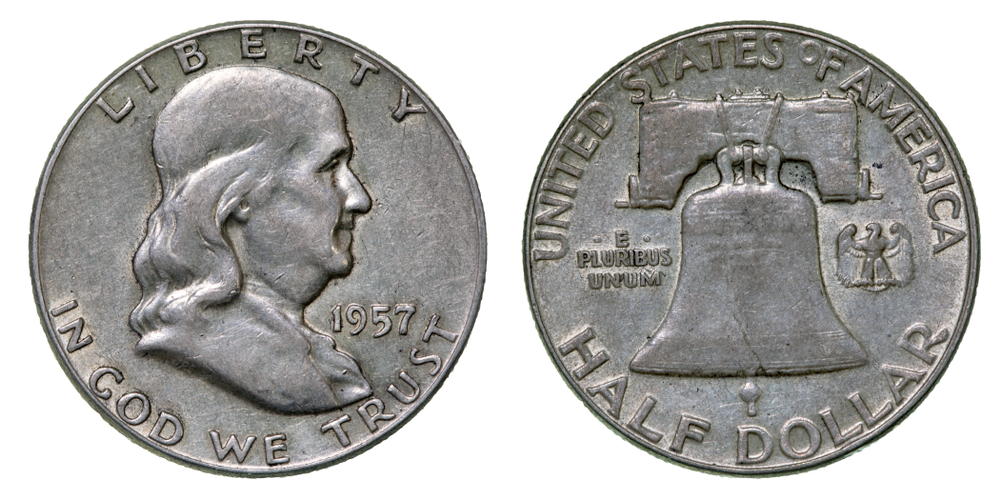Franklin Silver Half Dollars are a fascinating and historically significant series of United States coins. Minted from 1948 to 1963, these coins feature a design honoring one of America’s founding fathers, Benjamin Franklin. Back when we started first buying silver, we bought Franklin half dollars.
This guide will provide you with essential information about Franklin Silver Dollars, including their history, values, collecting tips, and more.
I. History of Franklin Silver Dollars
A. Inception and Design
- Franklin Silver Half Dollars, officially known as the Franklin Silver Dollars, were introduced in 1948 to commemorate the 200th anniversary of Benjamin Franklin’s birth.
- The coin’s obverse features a profile portrait of Benjamin Franklin, a polymath known for his contributions to science, politics, and literature.
- The reverse design showcases the Liberty Bell, a symbol of American independence.
B. Composition
- Franklin Silver Half Dollars are made of 90% silver and 10% copper.
- Each coin has a diameter of 30.6 mm (1.21 inches) and weighs 12.5 grams (0.44 ounces).
C. Minting Locations
- These coins were minted at various U.S. Mint facilities, including Philadelphia, Denver, and San Francisco.
- Look for mintmarks on the reverse side near the Liberty Bell to determine the coin’s mint of origin.
II. Collecting Franklin Silver Dollars
A. Circulated Coins
- Franklin Half Dollars were heavily circulated during their time in circulation, making them relatively easy to find in well-worn condition.
- Collectors often seek circulated coins in grades ranging from “Good” to “Very Fine.”
B. Uncirculated Coins
- Uncirculated Franklin Silver Half Dollars, with no signs of wear, are highly desirable to collectors.
- Coins in mint condition, designated as “Mint State” (MS) with grades MS-60 and above, are more valuable.
C. Key Dates and Varieties
- Some Franklin Silver Dollars are more valuable due to their rarity or unique characteristics. Key dates and varieties include:
- The 1949-S is the key date, and a high-grade example can command a significant premium.
- Proof coins, minted for collectors, often have mirror-like surfaces and are highly sought after.
- Look for doubled dies or other minting errors that can increase a coin’s value.
III. Grading Franklin Silver Dollars
- Grading plays a crucial role in determining the value of a Franklin Silver Dollar.
- The Sheldon Coin Grading Scale, ranging from Poor (P-1) to Perfect (MS-70), is commonly used for grading.
- Factors to consider when grading include wear, luster, surface quality, and eye appeal.
IV. Storage and Preservation
- Store your Franklin Silver Dollars in a cool, dry place, away from direct sunlight and moisture.
- Consider using coin holders, capsules, or albums designed for coin storage to protect them from damage and tarnishing.
V. Valuing Franklin Silver Half Dollars
- The value of Franklin Silver Half Dollars varies based on factors like condition, rarity, and demand.
- Consult reputable coin price guides, online auction websites, or seek the advice of a professional numismatist to determine the current market value of your coins.
VI. Selling Franklin Silver Half Dollars
- When selling Franklin Silver Dollars, consider your options, including coin shows, coin dealers, online marketplaces, and auctions.
- It’s advisable to have your coins professionally appraised before selling them to ensure you receive fair market value.
VII. Conclusion
Franklin Silver Half Dollars are not only valuable collector’s items but also a reminder of Benjamin Franklin’s significant contributions to American history. Whether you’re a seasoned numismatist or a novice collector, this guide should help you navigate the world of Franklin Silver Dollars with confidence and appreciation for these remarkable coins. Happy collecting!


